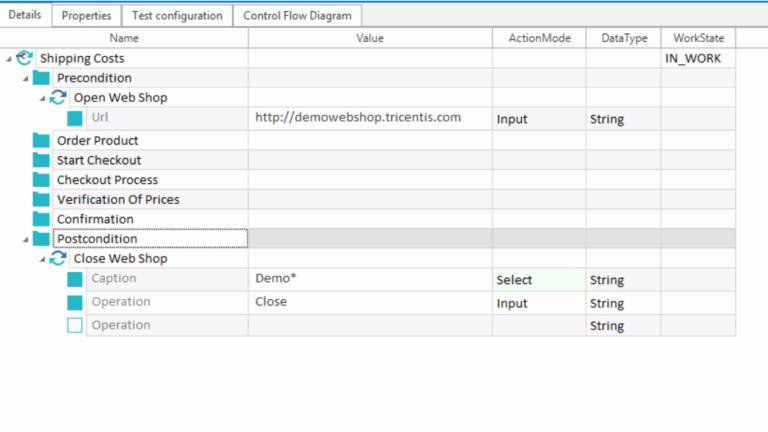Introduction:
Lists are one of the most commonly used data structures in Python. They allow us to store multiple items in a single, ordered collection, making it easy to work with sets of data. However, as our data changes or evolves, we often need to remove elements from lists. Whether you’re working with large datasets or simply modifying your program a list in your Python program, knowing how to remove elements efficiently is an essential skill for any Python programmer.
If you’re exploring online training in Python, it’s crucial to master list operations like removing elements, as this forms the foundation for working with real-world data. In this article, we will walk you through various techniques for removing elements from a list in Python, complete with real-world examples and step-by-step instructions. Let’s dive in!
Why Remove Elements from a List in Python?
Lists are one of the most versatile and commonly used data structures in Python. They allow you to store, manipulate, and process collections of data efficiently. However, working with dynamic data often requires removing elements from a list based on different conditions. Understanding when and why to remove elements is just as important as knowing how to do it.
Let’s explore the practical reasons for removing elements from a list and how it plays a crucial role in different programming scenarios.
1. Practical Reasons for Removing Elements from a List
1.1. Data Cleaning and Preprocessing
When working with large datasets, especially in fields like machine learning, data analysis, and web scraping, it is essential to clean and preprocess the data before using it for analysis. This often involves removing unwanted elements from lists.
Example Scenarios:
- Removing missing or null values that could skew results in data analysis.
- Filtering out duplicate or redundant data to maintain accuracy.
- Eliminating outliers or incorrect entries from datasets.
Example Code:
pythondata = ["apple", "", "banana", None, "cherry", ""] # List with empty and None values
cleaned_data = [item for item in data if item] # Remove empty strings and None values
print(cleaned_data)
Output:
css['apple', 'banana', 'cherry']
1.2. Memory Optimization
Python lists consume memory dynamically, and when handling large lists, removing unnecessary elements can improve memory efficiency. If a list holds a large number of unused or redundant items, cleaning it up helps optimize performance.
Example Scenario:
- A script loads millions of records into a list for temporary processing. Once certain items are no longer needed, they should be removed to free up memory.
Example Code:
pythonlarge_list = [i for i in range(1000000)] # A large list
del large_list[:500000] # Remove first 500,000 elements
print(len(large_list)) # Check new list size
Output:
500000
1.3. Filtering Data Based on Conditions
Often, Python programs need to filter elements dynamically. This is useful in applications such as:
- User input validation – Removing invalid entries from a list.
- Log file processing – Filtering out unnecessary log messages.
- E-commerce applications – Removing out-of-stock items from a cart.
Example Code:
pythonnumbers = [10, 15, 20, 25, 30, 35]
filtered_numbers = [num for num in numbers if num % 2 == 0] # Keep only even numbers
print(filtered_numbers)
Output:
csharp[10, 20, 30]
1.4. Modifying Lists Dynamically in Real-Time Applications
Lists are used in real-time applications where elements change frequently, such as:
- Task management systems – Removing completed tasks.
- Game development – Removing inactive players from a list.
- Chat applications – Removing users who have left the conversation.
Example Code:
pythonplayers = ["Alice", "Bob", "Charlie", "Dave"]
disconnected_players = ["Charlie", "Dave"]
# Remove disconnected players
players = [player for player in players if player not in disconnected_players]
print(players)
Output:
css['Alice', 'Bob']
2. Why Mastering List Element Removal is Important
Knowing how to efficiently remove elements from a list ensures:
- Cleaner and more structured code – Helps maintain readable and efficient logic.
- Improved performance and memory efficiency – Optimizes resources in large-scale applications.
- Better data integrity and accuracy – Prevents incorrect or unnecessary data from affecting results.
Now that we understand why removing elements from lists is useful, let’s dive into the different ways to remove elements in Python! 🚀
Methods for Removing Elements from a List in Python
There are several ways to remove elements from a list in Python, each serving different use cases. Let’s go through the most common methods:
1. Using the remove() Method
The remove() method removes the first occurrence of a specified value from a list. If the value is not found, Python raises a ValueError. This method is useful when you know the element you want to remove, but not its index.
Syntax:
list.remove(value)Example:
fruits = ['apple', 'banana', 'cherry', 'banana', 'grape']
fruits.remove('banana') # Removes the first occurrence of 'banana'
print(fruits)Output:
['apple', 'cherry', 'banana', 'grape']In the example above, only the first occurrence of ‘banana’ is removed.
Considerations:
- This method only removes the first occurrence of the specified element.
- If the element does not exist, Python will raise a
ValueError.
2. Using the pop() Method
The pop() method removes and returns an element at a specific index. If no index is provided, it removes and returns the last element of the list. This method is particularly useful when you want to remove an element by its index.
Syntax:
list.pop(index) # Removes the element at the given indexExample:
fruits = ['apple', 'banana', 'cherry', 'grape']
removed_fruit = fruits.pop(1) # Removes the element at index 1 ('banana')
print(fruits)
print(f"Removed fruit: {removed_fruit}")Output:
['apple', 'cherry', 'grape']
Removed fruit: bananaConsiderations:
- The
pop()method returns the removed element, which can be useful if you want to keep track of the removed item. - If no index is provided,
pop()removes and returns the last element of the list.
3. Using List Comprehension
List comprehension is a concise and Pythonic way to filter and remove elements based on certain conditions. Instead of modifying the list in-place, list comprehension creates a new list with the desired elements.
Syntax:
new_list = [item for item in list if condition]Example:
fruits = ['apple', 'banana', 'cherry', 'grape', 'banana']
fruits = [fruit for fruit in fruits if fruit != 'banana'] # Remove all 'banana' elements
print(fruits)Output:
['apple', 'cherry', 'grape']Considerations:
- List comprehension creates a new list, leaving the original list unchanged.
- It is an efficient and readable way to remove elements based on a condition.
4. Using the del Statement
The del statement can be used to remove elements by index or slice. It’s a powerful tool for removing elements, especially if you need to delete multiple elements at once.
Syntax:
del list[index]
del list[start:end] # To remove a range of elementsExample:
fruits = ['apple', 'banana', 'cherry', 'grape']
del fruits[1] # Removes the element at index 1 ('banana')
print(fruits)Output:
['apple', 'cherry', 'grape']Considerations:
delcan be used to delete multiple elements by specifying a slice (e.g.,del list[1:3]).- Unlike
pop(),deldoes not return the deleted item.
5. Using clear() Method
The clear() method removes all elements from a list, making it empty. This is useful when you want to reset a list.
Syntax:
list.clear()Example:
fruits = ['apple', 'banana', 'cherry', 'grape']
fruits.clear() # Removes all elements from the list
print(fruits)Output:
[]Considerations:
- The
clear()method is irreversible; once the elements are removed, they cannot be recovered unless saved beforehand.
6. Removing Elements Based on Multiple Conditions
You can combine list comprehension with multiple conditions to remove elements that meet certain criteria.
Example:
numbers = [1, 2, 3, 4, 5, 6, 7, 8, 9]
# Remove all odd numbers
numbers = [num for num in numbers if num % 2 == 0]
print(numbers)Output:
[2, 4, 6, 8]7. Using filter() Function
The filter() function in Python provides another elegant approach to remove elements from a list based on a condition. It returns a filter object, which can be converted to a list.
Syntax:
filter(function, iterable)Example:
fruits = ['apple', 'banana', 'cherry', 'grape']
# Remove all fruits that have more than 5 letters
fruits = list(filter(lambda x: len(x) <= 5, fruits))
print(fruits)Output:
['apple', 'grape']Considerations:
filter()returns a filter object, so you must convert it to a list (or another iterable) to view the result.- The lambda function can be customized to apply more complex conditions for filtering.
8. Using remove() with Loops for Multiple Occurrences
If you need to remove multiple occurrences of a specific value, you can loop through the list and call remove() repeatedly until all occurrences are deleted. This method is useful when there are multiple instances of the same value.
Example:
fruits = ['apple', 'banana', 'cherry', 'banana', 'grape']
while 'banana' in fruits:
fruits.remove('banana')
print(fruits)Output:
['apple', 'cherry', 'grape']Considerations:
- This method can be inefficient for long lists with many duplicate elements because each call to
remove()scans the list for the target value.
9. Using List Slicing to Remove Elements by Index
Instead of removing one element at a time, you can use list slicing to remove a range of elements from a list. This method allows you to remove a contiguous block of elements.
Syntax:
list[start:end] = [] # Removes elements between index start and end (inclusive)Example:
fruits = ['apple', 'banana', 'cherry', 'grape']
fruits[1:3] = [] # Removes 'banana' and 'cherry'
print(fruits)Output:
['apple', 'grape']Removing elements from a list in Python is a fundamental skill that every programmer should master. Whether you’re cleaning datasets, optimizing memory usage, or filtering data dynamically, knowing how to efficiently manipulate a list in Python can greatly enhance your code’s performance and readability.
Python provides multiple ways to remove elements from a list, including removing by value, by index, conditionally, or clearing the entire list. Choosing the right method depends on the size of the list, performance considerations, and the nature of the data you are working with.
In this guide, we’ll cover different list removal techniques in Python, when to use them, and their real-world applications.
Key Takeaways:
1. Versatility of List in Python
Python offers multiple ways to remove elements from a list, including:
- By value using
remove() - By index using
pop()ordel - Conditionally using list comprehensions
- Clearing the entire list in Python using
clear()
These methods allow flexibility depending on the use case.
2. Handling Errors with remove()
The remove() method is used to delete an element by value but raises a ValueError if the element is not found in the list.
Example:
pythonmy_list = [10, 20, 30]
if 40 in my_list:
my_list.remove(40) # Avoids ValueError if 40 is not in the list
else:
print("Element not found!")
By checking for an element’s existence first, you can safely modify a list in Python.
3. Removing Elements by Index with pop()
The pop() method is useful for removing elements by index while also returning the removed value.
Example:
pythonfruits = ["apple", "banana", "cherry"]
removed_fruit = fruits.pop(1) # Removes "banana"
print(removed_fruit) # Output: banana
print(fruits) # Output: ['apple', 'cherry']
4. Conditional Removal Using List in Python
List comprehensions provide a powerful way to filter and remove elements dynamically from a list in Python.
Example:
pythonnumbers = [10, 15, 20, 25, 30]
filtered_numbers = [num for num in numbers if num % 2 == 0] # Keeps only even numbers
print(filtered_numbers) # Output: [10, 20, 30]
5. Deleting Elements In-Place with del
The del statement allows you to remove elements from a list in Python by index or slice multiple elements at once.
Example:
pythonmy_list = [0, 1, 2, 3, 4, 5]
del my_list[2] # Removes the element at index 2
print(my_list) # Output: [0, 1, 3, 4, 5]
6. Clearing a List in Python with clear()
The clear() method is perfect for removing all elements from a list in Pyhton, making it useful when you want to reset a list without creating a new one.
Example:
pythondata = ["A", "B", "C"]
data.clear()
print(data) # Output: []
7. Performance Considerations for Large List in Python
When working with large datasets, choosing the right list removal method can optimize memory usage and execution speed.
- List comprehensions are generally faster than looping and using
remove(). - Using
dequefrom thecollectionsmodule can speed up deletions from the beginning of a list in Python.
Example of using deque for optimized deletions:
pythonfrom collections import deque
queue = deque([1, 2, 3, 4, 5])
queue.popleft() # Removes the first element efficiently
print(queue) # Output: deque([2, 3, 4, 5])
8. Real-World Applications of List Removal in Python
Mastering list removal techniques is essential for:
✅ Data Cleaning: Removing missing or unwanted values from lists
✅ Web Scraping: Filtering out unnecessary data
✅ Game Development: Removing inactive players from a list
✅ E-commerce Applications: Removing out-of-stock items dynamically
✅ Log File Management: Filtering log data for analysis
9. The Importance of List Manipulation in Python for Data Science & Web Development
Python is widely used in data science and web development, where modifying lists is a crucial part of:
- Data wrangling and transformation
- Filtering large datasets for machine learning
- Managing real-time user inputs dynamically
Example: Removing missing values from a dataset
pythondataset = ["Alice", "", "Bob", None, "Charlie"]
cleaned_dataset = [name for name in dataset if name] # Removes empty and None values
print(cleaned_dataset) # Output: ['Alice', 'Bob', 'Charlie']Conclusion:
Removing elements from a list in Python is an essential skill for any developer. Whether you need to remove specific elements, clear a list, or filter out unwanted data, Python offers several tools to help you manage your lists efficiently. By mastering the various methods—remove(), pop(), list comprehension, del, and clear() you can handle a wide range of list manipulation tasks.
If you’re eager to deepen your understanding of Python and explore more advanced topics, enrolling in H2K Infosys’ online courses for Python language can be a game-changer. Our expert-led online training in Python is designed to give you hands-on experience and prepare you for real-world applications, whether you’re just starting or looking to refine your skills.
Ready to dive into Python programming? Join our online classes for list in Python today and start building your future in tech!





























